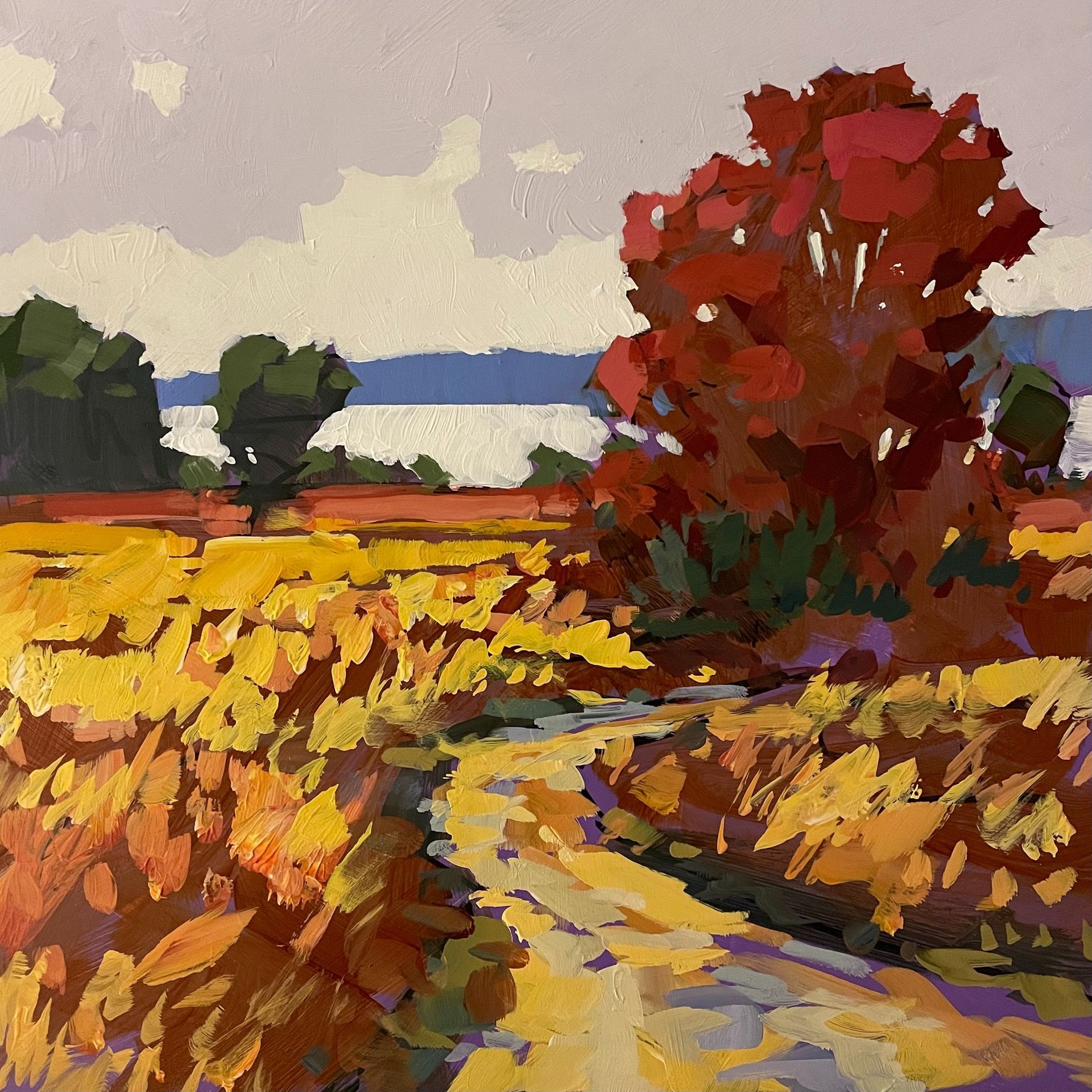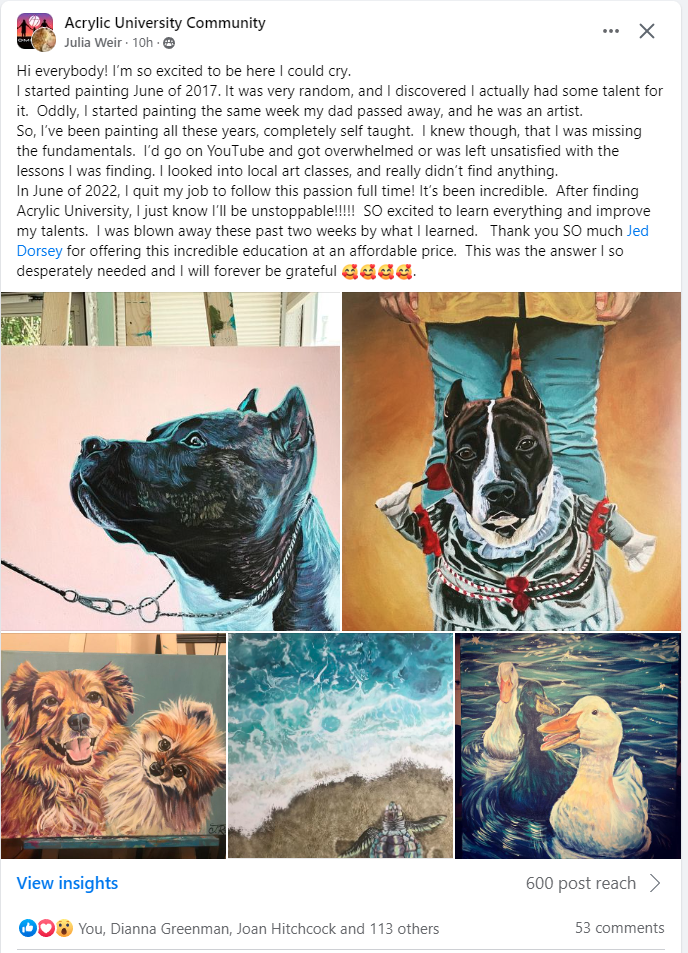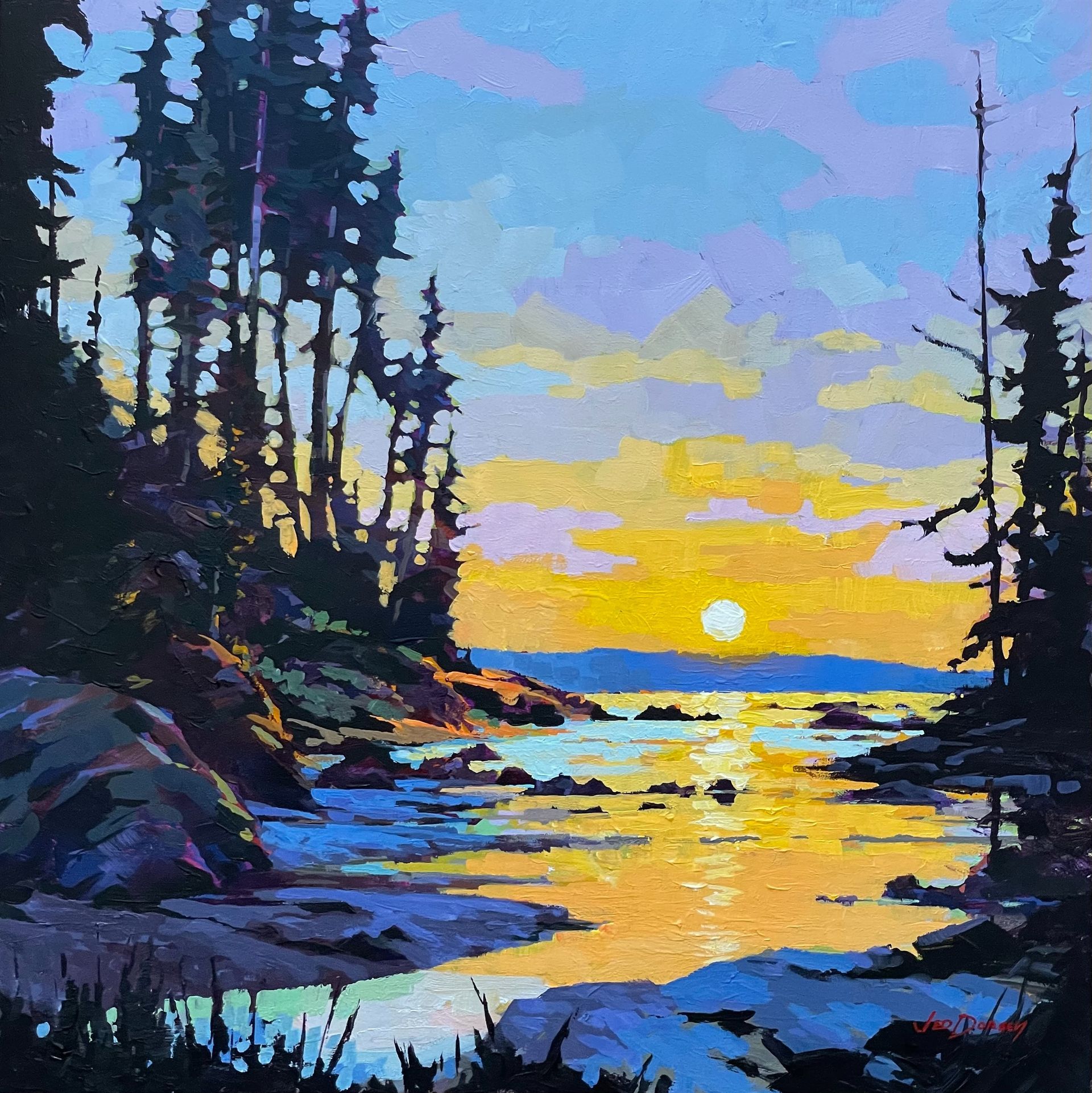Questions & Answers: Learning to Paint with Jessica Green
Jed Dorsey • December 4, 2020
In this session Jessica Green joins us from Indianapolis, IN.
What a joy Jessica is! She has such a great perspective on being an artist. So many nuggets of wisdom. Here are a few:
- You don't have to be a full-time artist to be a successful artist. You can enjoy art and flourish even if you don't make your living from it. There are different types of artists!
- There are ebbs and flows in life. Do what you can and enjoy your season. Be fully present in whatever season you are in.
- If you feel stuck and can't paint just switch gears. Do something else creative (it could be cooking or something not normally thought of as "creative.") Be gentle with yourself.
- Also don't get discouraged when a solution stops working in anything - try something different. Most solutions are temporary.
- Time away from painting is not wasted. You need to fill yourself up with inspiration. You can't paint from an empty pitcher. Get outside. Have some fun!
Jessica has quite a bit of experience with Art Fairs so we had some great conversation about this topic.
A huge thanks to Jessica for taking time to be with us in the midst of her busy life!

To see more of Jessica's work go to: http://www.jessicagreenartwork.com/

Essential Tools for Acrylic Painters Acrylic painting is one of the most versatile and accessible forms of painting. Whether you're a beginner or an experienced artist, having the right tools can make all the difference in your creative process. In this post, we'll go over the essential supplies every acrylic painter should have if you're a TOTAL beginner. Even if you're used to Acrylic Painting, you'll learn a lot from this! There's a lot of unhelpful information out there that makes it seem like it's more difficult to figure out than it actually is. There's only a few supplies you need and you're all set to master Acrylic paints 1. Acrylic Paints Student vs. Artist Grade Paints There are two main types of acrylic paints: student grade and artist grade . Student-grade paints are more affordable and work well for beginners, but they contain less pigment and more filler, which can result in weaker colors. Artist-grade paints have a higher concentration of pigment, providing richer, more vibrant colors and better mixing capabilities.




